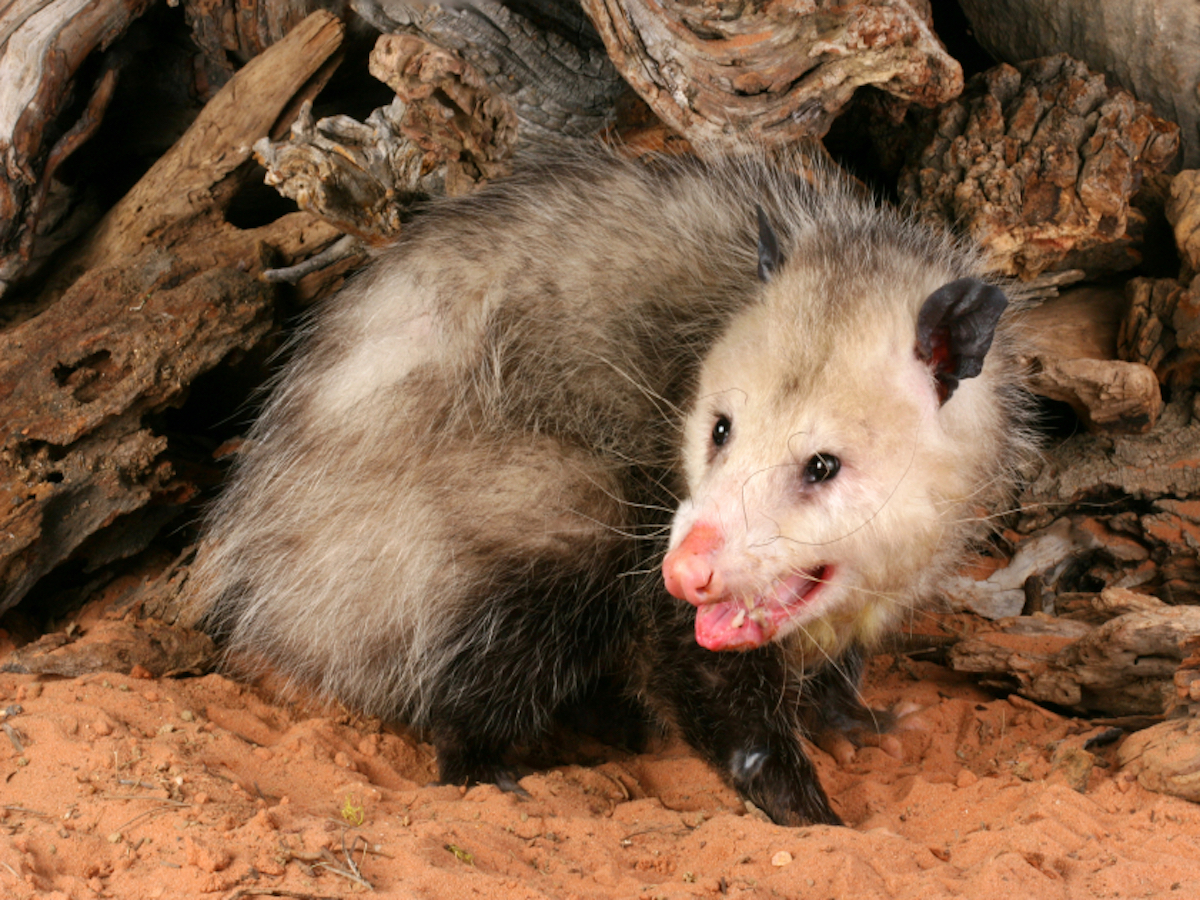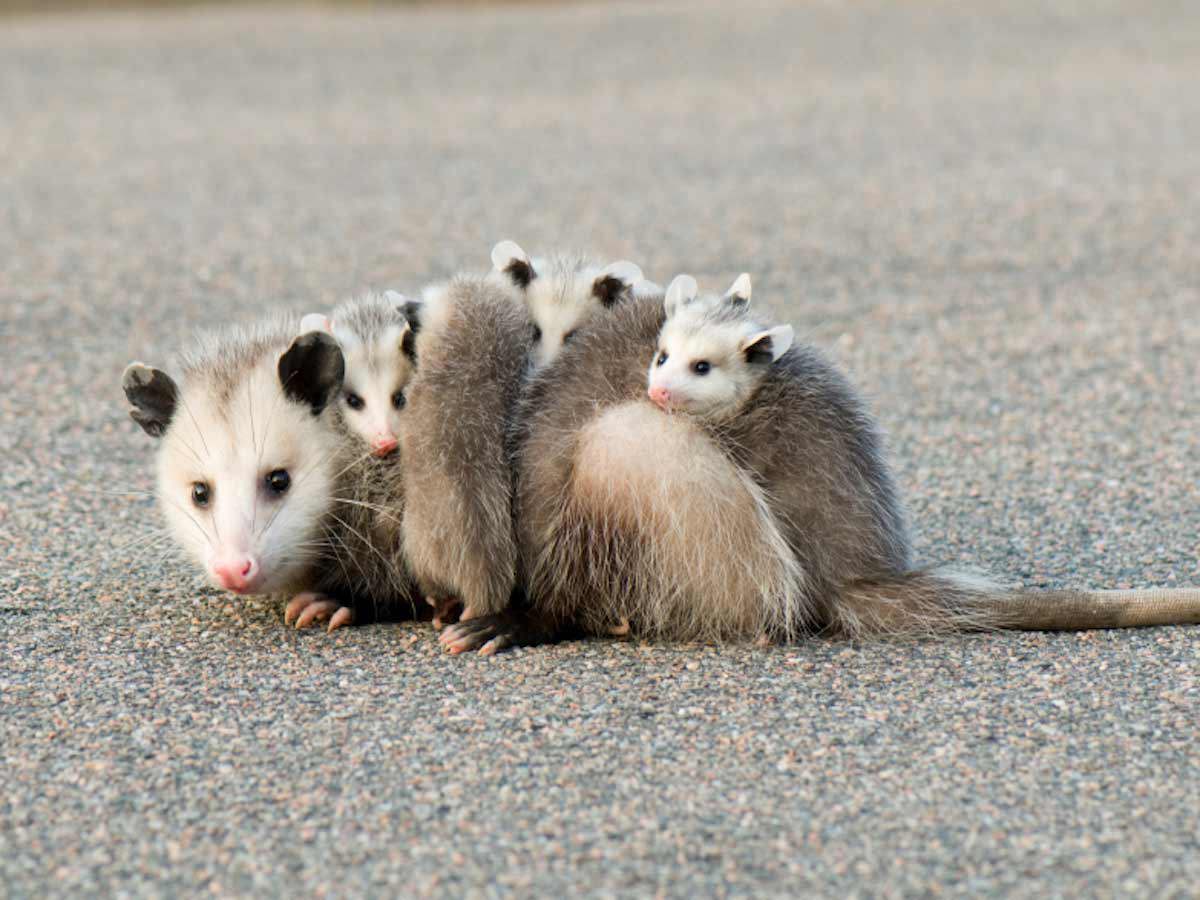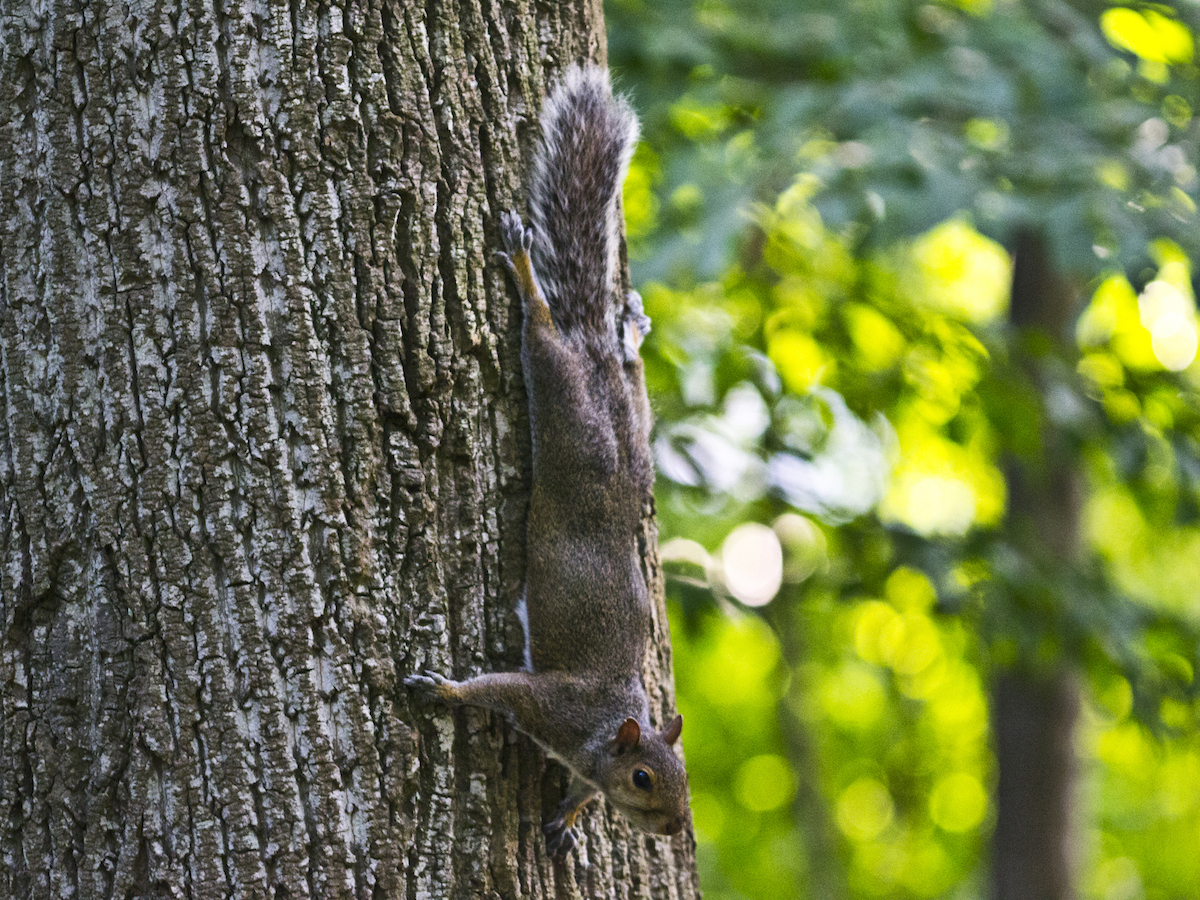Opossums Didelphis virginiana

Opossum Identification
Color: White or gray
Size: Up to 40 inches in length, generally about the size of a house cat
Legs: 4
Antennae: No
Shape: Long and pointed face with round, hairless ears and rat-like tail
Region: Found in eastern, central and west coast regions of the U.S.
What is an Opossum?
Opossums are the only marsupial found in North America. They live in many parts of the United States with the exception of the Rockies, western plains and parts of the northern region. Opossums usually live alone and are only active at night. Though a relative of the kangaroo, opossums are much slower and produce a nauseating smell when threatened. These wild animals are able to survive in a wide range of conditions and locations by virtue of their flexible diets and reproductive habits. If you are dealing with an infestation, opossum removal should be handled by a professional.

What Do Opossums Look Like?
Opossums grow up to 40 inches in length, about the size of a house cat. Their bodies are covered in white or grayish hair. Opossums have a long, pointed face with round, hairless ears and a rat-like tail. Additionally, females have a pouch on their stomach for holding newborns.
Although the average person may use the terms “opossum” and “possum” interchangeably, they are different. An opossum is a white and gray marsupial that is found primarily in North America. In contrast, a possum is the name used to describe a marsupial found in Australia, New Zealand and China that is similar in appearance to an opossum. Their name derives from the term “opossum.”
If you suspect an opossum infestation in your home, contact a licensed pest control professional to conduct an inspection and work with you to develop an opossum treatment plan. Opossum removal techniques such as traps and fencing may be used. A professional can also provide more helpful opossum facts that can help prevent future infestations.
Opossums are nocturnal creatures, meaning that they are mainly active after dark. Known as solitary animals, they usually live alone when they are not actively breeding. Though preferring to travel by land, opossums are also skilled swimmers and can use their opposable rear thumbs and long tails to effectively climb trees and other structures.
Opossums generally eat fruit, grains and insects, but will also eat out of compost piles, garbage cans and pet food dishes if they can get access. They have been known to eat fish, birds and mammals as well.
Opossums usually have two to three litters per year, with an average of seven young in each litter. Like other marsupials, the young spend their first several weeks of life in their mother’s pouch. After this time period, young opossums will leave their mothers in search of their own home.
Opossums will seek out existing structures such as garages, hollow logs, tree cavities, brush piles or burrows of other animals when looking for a home. They prefer environments near streams or swamps but can also live in diverse areas, ranging from arid to moist, wooded to open fields. Opossums prefer a home with close proximity to food and water.
Opossums sometimes den in attics and garages where they may construct a messy nest. They can also tear ductwork or insulation if they gain access to the interior of a household. When digging for food, they can also damage lawns. In fact, opossums have the ability to destroy poultry, game birds and their nests. When startled, opossums can bare their sharp teeth and hiss. In rare cases, opossums may bite if they feel threatened.
Although the lifestyle habits of opossums make them seem like prime hosts for rabies, they rarely contract the disease and are even less likely to transmit it. However, opossums can carry a slew of other diseases, such as leptospirosis, tularemia and tuberculosis to name a few. They may also become infested with fleas and mites, especially in urban areas.
When threatened or harmed, opossums have been known to “play possum” by acting like a dead animal, which may cause an onlooker to think that the opossum is suffering from rabies. They do so by drawing back their lips, baring their teeth, causing saliva to foam around their mouth, and secreting a foul-smelling liquid from their anal glands. Rather than a sign of rabies, this act is an opossum’s natural defense mechanism.
In order to prevent an opossum from taking up shelter in a residence, homeowners should store trash in sealed receptacles with animal-proof lids, preferably in a locked shed or outhouse. It’s good practice to bring pet food dishes inside at night to avoid attracting opossums and other nuisance wildlife.
Homeowners should also remove other obvious sources of food and shelter from the property, such as fallen berries and fruits, as well as woodpiles and logs. On a nice day, inspect the outside of the home for holes and access points, such as broken vent covers. To further limit opossum accessibility to a home, tree branches hanging near roofing should be trimmed, as opossums are skilled climbers and leapers.
If you suspect an opossum issue in your home, contact a licensed pest control professional. You can find one near you with the helpful zip code search below.




